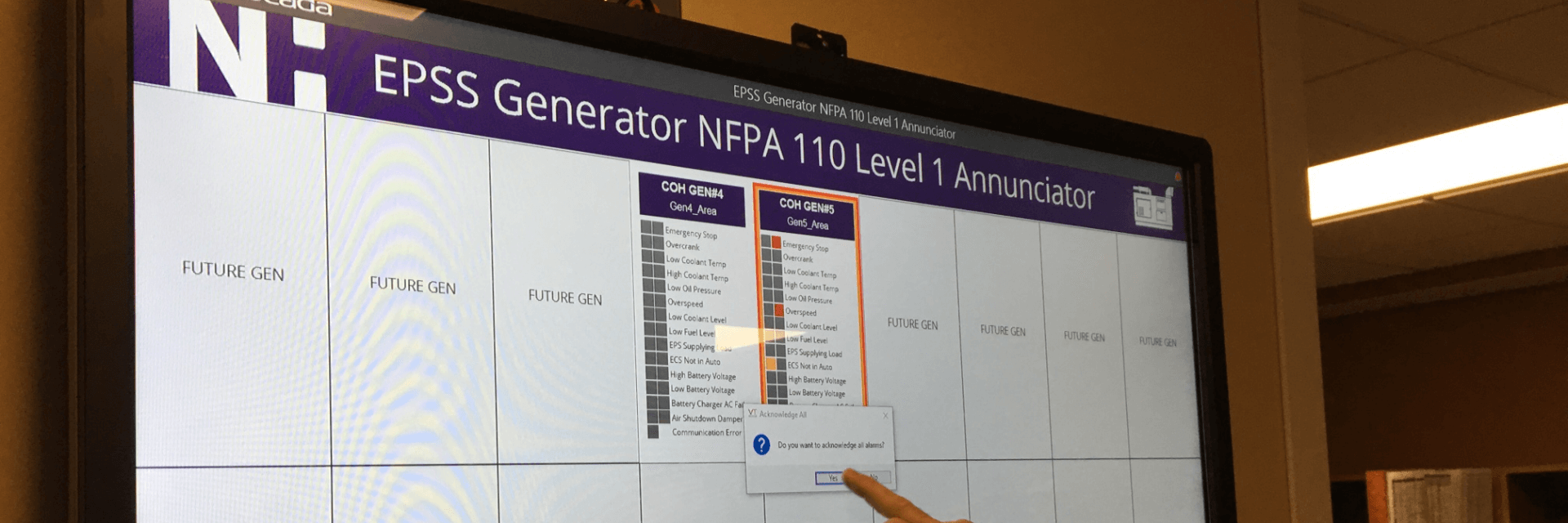The University of Virginia Medical Center chose Affinity Energy to install multi-circuit meters on ATSs around campus. Ultimately, the submeters assist the maintenance supervisor to accurately determine load status during emergency power situations.
University of Virginia Medical Center
The University of Virginia Medical Center in Charlottesville, Virginia, is a Level One trauma center providing both inpatient and outpatient care. It opened in 1901. The facility has a total of 18 emergency generators. 40 ATS, and 15 facility operators.
What Our Clients Say About Us
Before our ATS submeters, we had zero visibility into our electrical loads. The data I have now gives me the power to mitigate load creep risks and plan for the future emergency power situations of the hospital.
Alex Di Giacomo
Maintenance Supervisor at University of Virginia Medical Center
Challenge
Due to the University of Virginia Medical Center’s exponential growth, it was becoming increasingly difficult for the central energy plant maintenance staff to keep track of electrical loads in their emergency power supply systems (EPSS).
Like many large medical campuses, they have dozens of automatic transfer switches (ATSs) distributed throughout campus. Unlike new hospitals built within the last 10 years, the University of Virginia Medical Center’s 40 ATSs did not have submeters built-in to the digital controllers.
Over its 30-year lifespan, the hospital has undergone rapid growth. Electrical loads have grown and changed, and it was becoming difficult to determine if the loads were growing over original ATS infrastructure load specifications.
The University of Virginia Medical Center needed visibility into potential load creep situations to avoid ATS failure due to lack of supporting capacity.
Solution
After assessing the challenges of University of Virginia Medical Center, Affinity Energy implemented an ATS multi-circuit metering retrofit solution to effectively manage load creep in a cost-efficient manner. Instead of installing conventional circuit monitoring on each ATS, Affinity Energy specified Dent PowerScout 24 multi-circuit submeters, significantly lowering hardware and installation costs.
A multi-circuit submeter uses one submeter CPU/circuit board to measure multiple loads. It has only one set of inputs for a common voltage source, and multiple sets of current inputs for loads that share the common voltage source. Because ATSs within the hospital environment were clustered in sets of 7 or 8, the multi-circuit submeter was an ideal solution for retrofitting the University of Virginia Medical Center’s ATSs with submetering capability.
After carefully integrating submeters within this critical infstructure, and adhering to strict OSHA regulations, all data from submeters within the EPSS was integrated into the existing SCADA system.
Read more about how multi-circuit submetering is a cost-effective solution for electrical load profiling
Results
By recording the submeter data within their SCADA environment, the University of Virginia Medical Center now has the information to accurately analyze load profiles. Using performance analysis, the maintenance supervisor is able to verify loads prior to ATSs switching to emergency, loads during emergency power situations, and loads after the ATS returns to the normal source.
Using this analysis, it’s simple to identify loads added during a power outage and not removed when normal power is restored. This data will help determine if and where a new generator or ATS capacity upgrade is needed.
After gathering data, the medical center will be able to trend year over year load growth to quantify load creep and prepare the data reports necessary to back up budget requests.
Related Success Stories
UVA Medical Center: Event Logging & Alerting
The University of Virginia Medical Center chose Affinity Energy to implement a SCADA system that provides alerting and documentation of event details in their central energy plant.
Novant Health Presbyterian Medical Center: NFPA 110 Generator Audible Alarming
Novant Health and Carolina CAT seek a new generator audible alarming solution to simplify NFPA compliance for the addition of new engine-generators by developing a functional solution that minimized…
QTS Data Center: UPS Template Architecture
Imagine how complicated it would be to commission an electrical power management system (EPMS) for the nation’s third largest data center with multiple entities involved, including design,…



